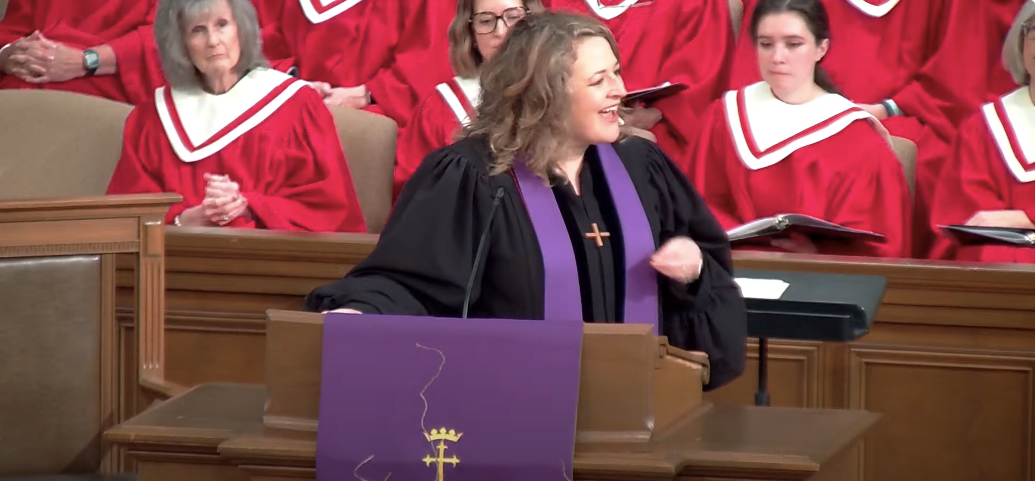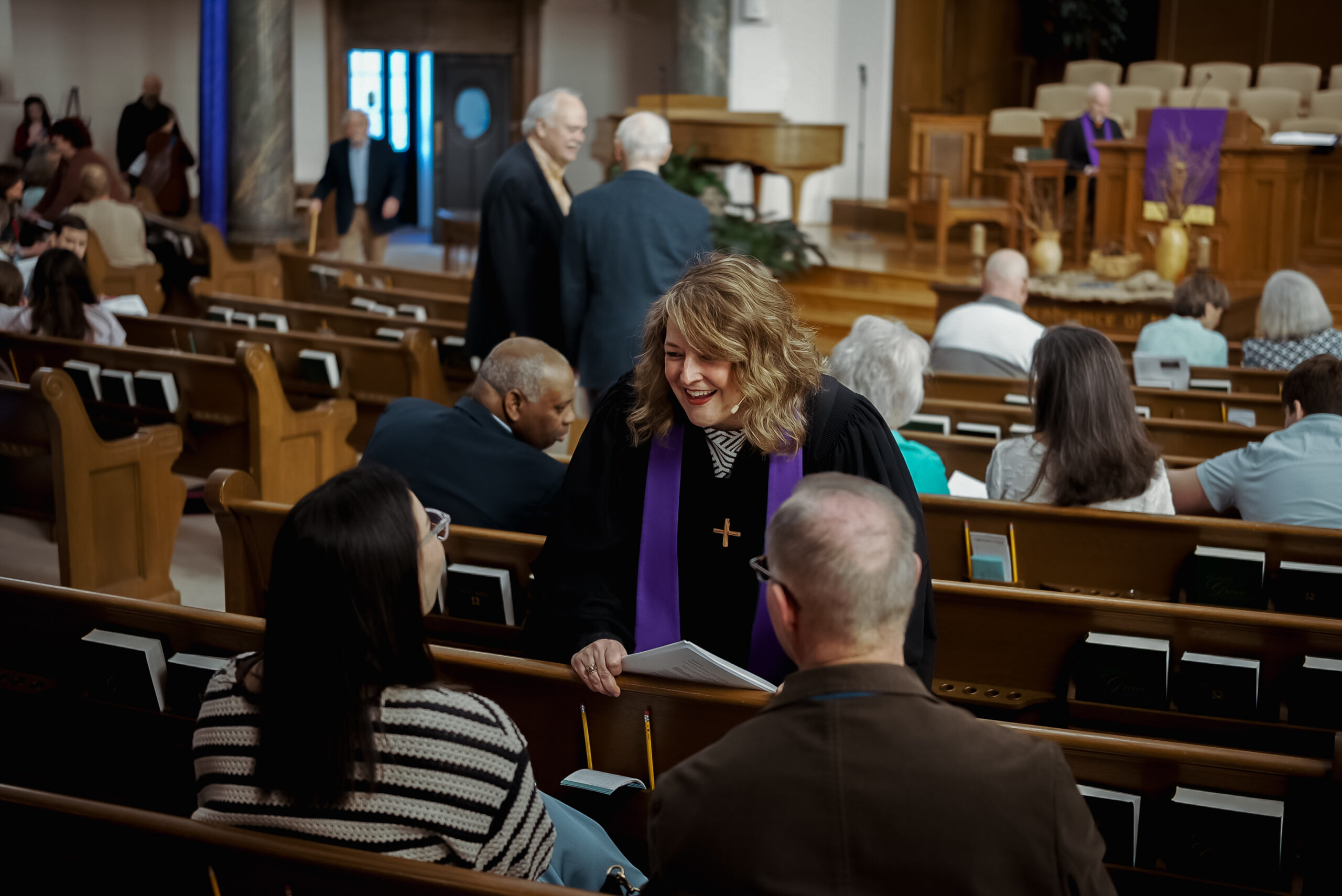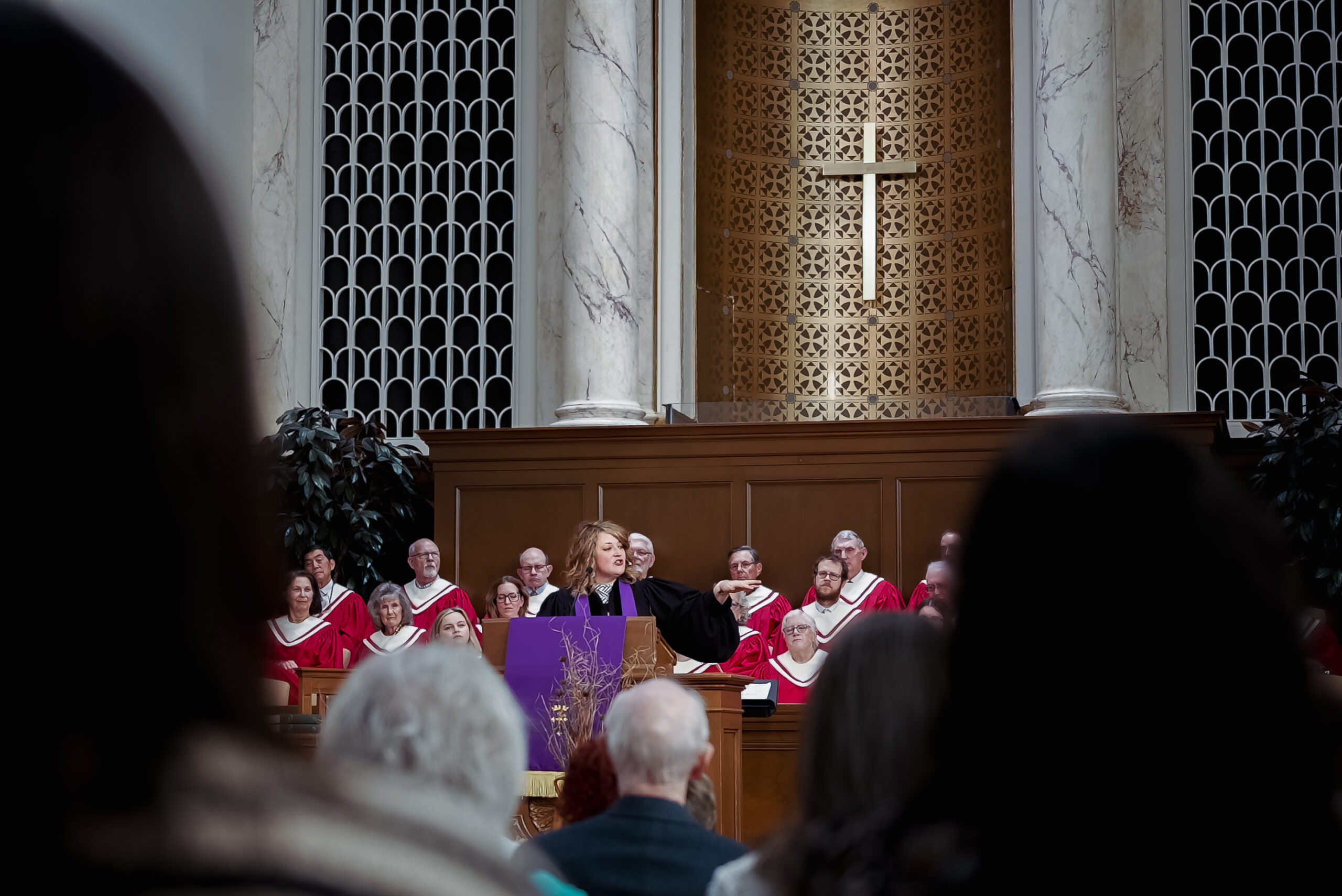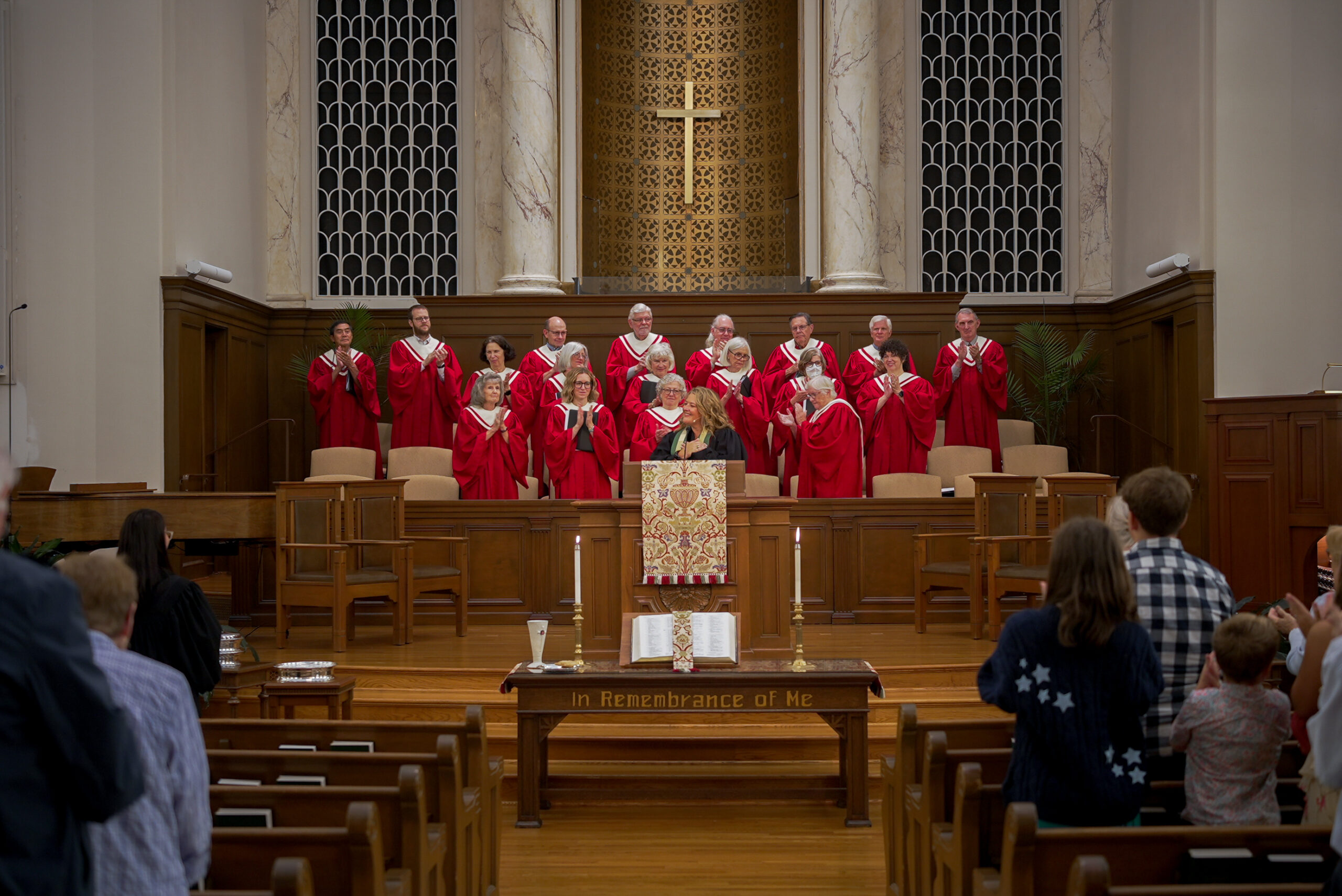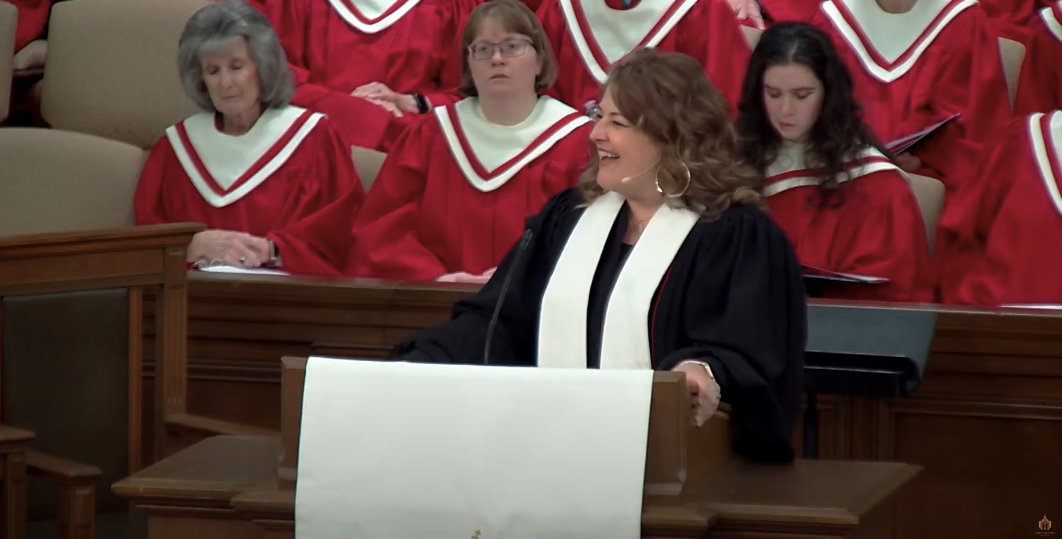I.About a half a dozen years ago on the Wednesday night before Easter, my family was leaving the church house with bags full of Easter goodies for our kids. My daughter Annabelle had plucked out the bunny ear and cotton tail set and promptly put it on with a squeal. She was hopping her way to the car when she echoed the game of “guess your age” the kids had played earlier and asked me, “how old are you, mommy?” “Ugh,” I said loudly. “I’m 37! I’m getting old!” (Have I mentioned that this was six years ago?!) And bouncing across the street with those bunny ears and tail catching the warm breeze and the final rays of sunset, Annabelle said to me without skipping a beat: “You’re not getting old, mommy. You’re getting new!”
I’ve told you that story before, and that my girl is turning 10 today on Easter makes it all the more meaningful to tell again. You’re getting new! Isn’t that precisely the promise of Easter?
II.They could hardly imagine it, though, the women who made their way to the tomb while it was still dark. In their grief, they moved through the early morning like molasses. The day before of sabbath quiet left them restless to complete their work of love anointing the body of Jesus. And now as they shuffled along on the first day of the week, memories surfaced in bits and pieces as they do when a beloved one has died. The smell of the ocean air from those long days by the Sea of Galilee. Stories of seeds and sowers, of lost coins and lost children. Mud he made to heal the man born blind, and miracles of abundance from a handful of bread and a couple of fish. And who could forget his anguished cries from the cross when he breathed his last.
So much more had died when he did, chief among them was their hope in a new way of life. They had caught a glimpse of it when he was around – blessing the poor, and bringing the children to him, and healing the sick, and calling their religious leaders to a different type of faithfulness. Not even the Roman soldiers who threatened and cajoled and bullied the citizens, who demanded their taxes and stamped out dissent – not even the Romans could dampen their vision as Jesus shared it. They could imagine a world where goodness and compassion prevailed, where evil and cruelty faded into the distant past, where the poor had enough, and people of all kinds could feast together at the crowded table of Love. “The kingdom of God has come near,” he’d say, their king whose power was made perfect in weakness. It was so good. He was so good. But he had died, and so had they, at least in part.1
As they arrived, they found the stone rolled away, and the body missing. They had but a moment to be perplexed, when two men — dazzling as angels — stood beside them and asked the question that has rung throughout time and space ever since: why do you look for the living among the dead? He is not here, but has risen!
III.Every now and again, pastors are asked by local funeral homes to step in and officiate a funeral service for a family who doesn’t have a church. That’s how I had the distinct honor to meet the wonderful family of one we’ll call Kendra. She was just a year older than me when she died from the sickle cell disease that chased her all her life. Sickly or fragile might be descriptors of someone who lived with chronic illness, but not Kendra. Her family made sure I knew that when I sat in their living room to meet Kendra through their stories a few days before the funeral.
They told me about how Kendra lived. Taking her wife out for crab cakes at Village Tavern. Baking peach cobbler for her son. Buying and wearing the most ridiculous high heels. Crocheting “push blankets” for her family members when new babies came into the world. Driving her mother-in-law to doctor’s appointments. Cussing you out as her love language – she’d holler at you, and then be fine. Laughing with her whole body – loud, slapping her leg, stomping her feet, getting up and running around.
As they told story after story, I learned there was nothing fragile about the small and mighty warrior they loved. They knew that about her, but the world around her may not have. Kendra was Haitian in a world of tribalism, Black in a world of white supremacy, a woman in a world of patriarchy, a lesbian in a world of homophobia, and disabled in a world of productivity. She loved unconditionally the very people who struggled to do the same and was boldly inclusive in a world that rejected her. Kendra, it seems, was the very embodiment of what Ivan Turgenev said on the cover of your worship guide, “Love, I thought, is stronger than death or the fear of death. Only by it, by love, life holds together and advances.”
That is until life reaches its end, even the fiercest, most colorful form of it. The funeral home was packed that day with mourners, beautiful in their finest purples (Kendra’s favorite color). The service alternated in English and her family’s native Creole. We prayed and sang her to heaven. But at the very end of the service, when the funeral directors moved to close the casket and proceed down the aisle to the burial, Kendra’s young adult daughter shouted out from the front row. “Wait,” she said. “Wait!” She looked at me in a panic, “Is this it?” And as the casket’s lid began to lower, she jumped out of her seat, flung herself over the modesty rail, and ran to Kendra’s lifeless body, unwilling and unable to let it go.
Her question was as much existential as it was logistical. How could she possibly live without this one who brought so much life? It was as piercing and true a moment to me as any other where we go looking for the living in the places of the dead.
IV.We go looking for the living, and instead run desperate for answers to the cemeteries of our world. Why the suffering. Why the injustice. Why the complexity. Why the panic. We can’t imagine how to live without who or what we’ve lost. In our terror, we too easily let the ghosts of the past lead us right back to nostalgia, with its tight borders and defined roles and unambiguous thinking. After loss, we hoard what’s left behind, sifting through the ruins of this wrecked relationship or that abandoned dream, this system or that injustice, this grudge or that guilt. The dead weight of fear becomes the albatross we can’t seem to shake.
Is this it?, we wonder.
We go looking for the living, and instead jump any hurdle to cling to the dead. We drill and dig and log and pollute and overconsume and underappreciate this world, unable and unwilling to see how we’re depriving the very life we’re trying to sustain. We pump plastic into our oceans and our faces. We trade enchantment for distraction, experience for content. We build machines to reason like humans and slip artificial intelligence into everyday life, tantalizing ourselves by every technological advance that veers ever closer to the real thing. We’re fooled into thinking a chatbot is a counselor, a collection of words is thoughtful writing, a filtered and generated image is a picture. We grasp the disembodied and the disposable and ask…
Is this it?
Even the church does this! So stuck in the tombs of our own making, Christians have thought what matters most to God is going to heaven after we die – instead of a transformation in how we live! At our worst, the church is slow to change and easily wooed by power and held captive by fear of anything we don’t understand.
Is this it?
And to them, to us, to all creation in all time and space, a question rises up from the place where all things were made new, a question as much spiritual as it is logistical. “Why do you look for the living among the dead? He is not here but has risen! Remember how he told you this would happen? Do you remember?”
The Greek term for “remember” here – mimnesko – is a muscular and active word. It means more than just “to recall”, and includes a summons “to bring past actions to bear on the present, with new power and insight.” Remembering is a beginning. It’s a crack of light across the horizon. It’s the dawn of a new day even while it is still dark.
Which brings us back to what the women did that day. That’s the good news they carried to the skeptical disciples, news they told and told again even when they were doubted. But remembering isn’t an explanation, it’s an experience.
Remembering alone feels like entertaining an idle tale. We start second guessing ourselves. Despair sets in, with a side of anxiety and a dash of discouragement. I’ll never get over it, we say. I’ll never find love again. Never reconcile with my dad. Never do the thing I most want to do. Never see true equality among all human beings in my lifetime. The crosses that litter the horizon of our lives feel fixed, permanent, unmoving.
But remembering together? Oh remembering together tells a resurrection story! Remembering together turns Good Friday people into Easter people. And at our best, the church is where the Easter people are! The remembering people. The ones who tell with our lips and our very lives that Jesus is now among the living, because it happened once and happens again and again! The ones who knew the promise of God told all throughout scripture and history came to life, finally and fully in the risen Christ. Easter People are the ones who summon the strength to be present together, and worship together, and fellowship together, and serve together, and pray together, and march together, and work for justice together, and find grace together. The ones who know that when these things happen, Easter happens, again and again and again. Something comes alive within us and among us. Resurrection, you might say.
V.Is this it?, the world asks, clinging to the dead. But the Easter people say no. “Why do you look for him among the dead?,” the angels ask. But the Easter people remember Jesus is now among the living!
He’s no longer past, but present. He’s no longer location-specific, but here and there and everywhere. Everywhere empires are brought down by hope. Everywhere mustard seeds grow into trees that shelter the vulnerable. Everywhere the feast is enough to fill. Everywhere wounds are bandaged by enemies. Everywhere the meek inherit the earth. Everywhere wayward ones are welcomed home again. Everywhere our children, fresh with life, remind us that the older can “get new” too. Every time people find their way again in 12 step programs and hospital bedsides and beloved community. Everywhere that actual people, with actual lives, and actual heartache, and actual suffering discover that – somehow! – in Christ, suffering isn’t all there is. Everywhere the worst thing isn’t the last thing. Everywhere an outsider finds belonging. Everywhere two people, despite all evidence to the contrary, find their way to reconciliation. Everywhere peacemakers refuse to be silent in the face of war. Everywhere there is flourishing and meaning-making, struggle and rising, co-creation and mutual liberation. Everywhere there is life. Everywhere all things are made new again.
Is that it? No!
So Easter people, remember! Go and tell the good news! For we have seen the Lord! Amen!
Listen to Pastor Emily’s full sermon here:

